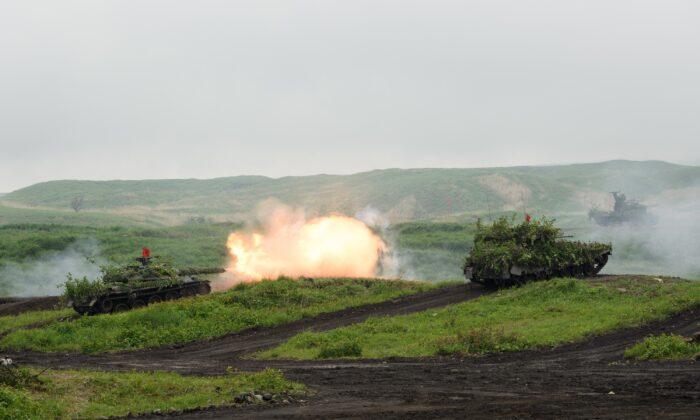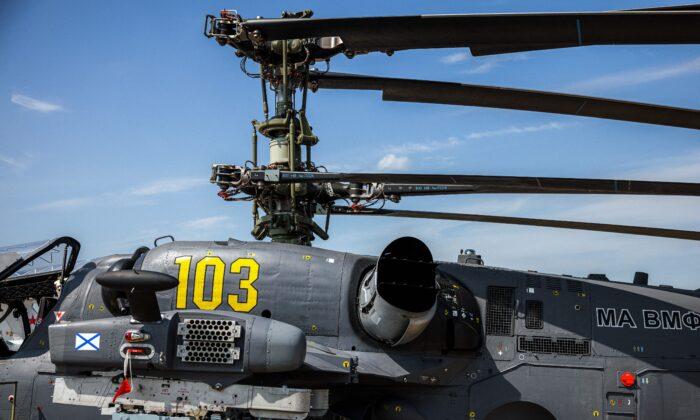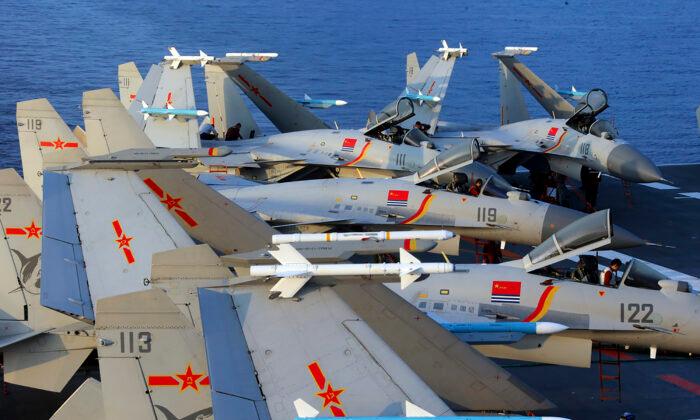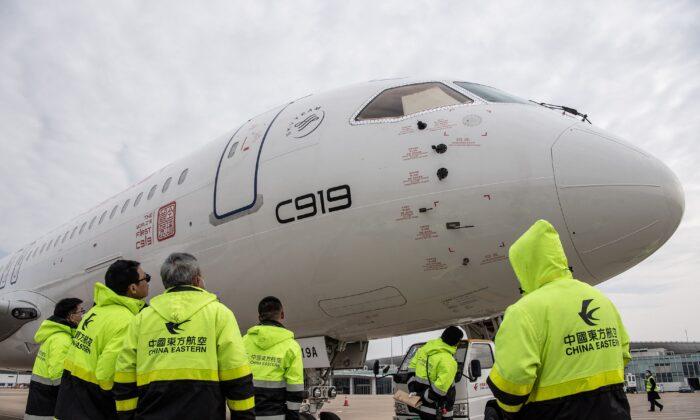There is a growing belief among some Western analysts that increasingly closer relations between Beijing and Moscow—driven by economics or great-power politics—could eventually blossom into a military alliance.
Alliances are based on mutual utility: each partner must be demonstrably useful to the other. And, frankly, Russia offers little advantage to China.
The Russian armed forces have shrunk considerably in the past decades. It is filled out with short-term conscripts—many of whom avoid the draft—and are equipped with military systems that date back to the Soviet era. The Army cannot afford to buy the new Armata tank, while the Air Force has purchased only a dozen fifth-generation Su-57 fighter jets.
Russia’s military weaknesses are perhaps the most pronounced in the Asia-Pacific region. Russian military power in the Far East is best exemplified by its naval presence and, therefore, by its Pacific Fleet, based in Vladivostok. Over the past 30 years, the Pacific Fleet has shrunk to a shadow of its Cold War self. Out of seven major surface combatants (cruisers and destroyers), all were built before the fall of the Soviet Union. Most newer ships are small corvettes intended for coastal operations.

The Pacific Fleet’s submarine force is a little better. Just a handful of its diesel-electric or cruise-missile submarines were built in the 21st century; the rest are approaching obsolescence.
In fact, the pride of the Russian Pacific Fleet consists of just three modern nuclear-powered ballistic-missile submarines (SSBNs) of the Borey-class, equipped with the new Bulava submarine-launched ballistic missile. Meanwhile, plans to upgrade the rest of the Pacific Fleet are increasingly in doubt, given budget cuts. In particular, the fleet lost its anticipated French-built Mistral-class amphibious assault ship, cancelled by Paris in the wake of the Crimea crisis.
Russia’s ability to project power into the Pacific Ocean is increasingly limited, therefore. Consequently, it offers little to China as a naval partner.
Beyond the military realm, Russia is losing its appeal as a supplier of high-tech weaponry. During the 1950s, China depended on the Soviet Union for nearly all of its most important weaponry. The People’s Liberation Army (PLA) was entirely outfitted with Soviet equipment, including T-54 and T-55 tanks; MiG-15, MiG-17, and MiG-19 fighter aircraft; the SS-N-2 Styx anti-ship missile (called the HY-2 Silkworm by the PLA); the AA-2 air-to-air missile; and the Romeo-class diesel-electric submarine.
Moreover, the Soviets provided Beijing with licenses and technology to manufacture these arms in China. In many cases, Moscow supplied the PLA with production know-how for some of its most advanced designs, such as the MiG-21 fighter.

Russian military-technical assistance resumed following the collapse of the USSR. In the early 1990s, Beijing placed an order with Moscow for 24 Su-27 fighter jets, its first purchase of Russian military equipment in more than 30 years. This was followed up by an agreement to allow China to license-produce 200 Su-27s at the Shenyang Aircraft Corporation in Liaoning Province.
In addition, Beijing acquired Sovremenny-class destroyers, Kilo-class diesel-electric submarines, Il-76 transport aircraft, and military helicopters, along with modern surface-to-air and air-to-air missiles. Between the early 1990s and the mid-2000s, China received more than US$21.5 billion worth of arms from Russia, and for much of this period Russian weapons systems were arguably the most potent armaments in the PLA’s inventory.
Over the past 20 years, however, China’s defense industry has so subsequently improved that it no longer needs to import much in the way of Russian weaponry or military technology. At the same time, the next great arms race has moved on to sophisticated dual-use technologies, particularly artificial intelligence (AI), 5G networking, and robotics.
These technologies are particularly critical to building next-generation military capabilities, and Russia and China have agreed to cooperate on a number of high-technology initiatives. These include the establishment of an annual “Russian–Chinese High-Tech Forum” and a “Sino-Russian Innovation Dialogue,” as well as the creation of joint science and technology parks as a basis for science and technology cooperation and innovation.
But for how long? Russia lacks the resources (money and manpower, plus the already low level of innovation in the national economy) to function as an equal to China, at least in the long term. Beijing could soon emerge as the dominant player in this bilateral cooperation. It already greatly outspends Moscow in such “new era” technologies as AI and 5G.
Should Moscow find itself playing the junior partner in such collaboration, it would constitute a reversal of the historical Sino-Russian technology-sharing relationship. China might also eventually believe that it has gained all it can from such a partnership and decide to jettison Russia. In any event, Sino-Russian collaboration when it comes to next-generation technologies may have a built-in governor limiting the extent and depth of this cooperation.
In short, China may soon discover that Russia is of diminishing use. Vladimir Putin could have less and less to offer Xi Jinping, except perhaps casting a supportive vote in the U.N. Security Council or by sending Russian diplomats to the Beijing Winter Olympics. But as a military ally or technology partner, Moscow may be of declining utility to Beijing.





